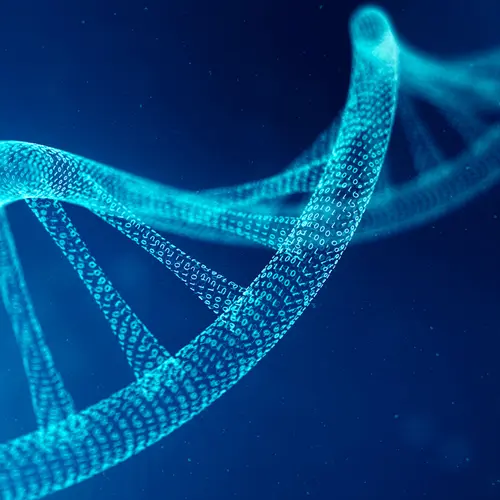Plasmapheresis is an uncommon treatment that can be used to manage something called myeloma kidney, a type of kidney failure that affects many people with multiple myeloma. It separates out plasma from the rest of your blood. It's a way to remove abnormal proteins and other harmful substances from your blood.
Plasma is the liquid part of your blood. It carries blood cells and proteins around your body.
In multiple myeloma, abnormal plasma cells multiply too quickly. These cells make a type of protein called an M protein that builds up and makes your blood thicker than usual. Thick blood can't flow as easily around your body. The abnormal protein can also damage your kidneys.
Plasmapheresis is a supportive treatment. That means it can temporarily help to relieve multiple myeloma symptoms and treat complications, particularly myeloma kidney, but it won't cure your cancer.
Therapeutic plasma exchange (TPE) or plasma exchange are other names for plasmapheresis.
How Did Plasmapheresis Start?
Researcher John Abel first used the term “plasmapheresis” in 1914. He separated red blood cells from plasma to treat kidney failure in dogs. Abel took the name from a Greek word meaning "withdrawal."
Plasmapheresis has been a treatment for multiple myeloma since the early 1950s. In the 1970s, doctors started using it to treat nervous system diseases like multiple sclerosis and myasthenia gravis. The purpose of this treatment is to remove the harmful antibody or protein in plasma that causes symptoms.
Using plasmapheresis to treat symptoms in multiple myeloma is controversial. Some studies showed that it doesn't improve outcomes like survival in people with multiple myeloma. Even with a lack of evidence, more hospitals use plasmapheresis to treat people with multiple myeloma today than they did 20 years ago, though that number is still small.
When Would You Need Plasmapheresis?
Plasmapheresis is a treatment for some of the problems that multiple myeloma causes. You might get this treatment if you have:
Kidney damage. Your kidneys filter waste out of your blood. In multiple myeloma, the plasma cells make too many proteins called light chains. These light chains get stuck in the tubes inside your kidneys and block them. Over time, the blockages can damage your kidneys.
About 40% of people with multiple myeloma already have some kidney damage when they're first diagnosed. Light chains can damage the kidneys so much that you need dialysis treatment to filter wastes out of your blood.
Thick blood. The abnormal proteins that plasma cells produce make your blood thicker than normal. Another name for this is hyperviscosity. Thick blood can't flow around your body as easily.
Hyperviscosity can cause problems like:
- Shortness of breath
- Headaches
- Blurry vision
- Bleeding
- Confusion
- Dizziness
What to Expect
You'll get plasmapheresis at a hospital. The process takes about 2 to 4 hours.
You may get a blood test before the procedure. A nurse or other provider will check your breathing rate, blood pressure, temperature, and other vital signs to look for any problems before starting.
During the treatment, someone from your medical team will place a thin tube called a catheter into a vein in your arm, neck, groin, or under your collarbone. You may get medicine to prevent pain before the catheter is placed.
The tube connects to a machine called a cell separator. Before your blood flows into the machine, medicines called anticoagulants are added to prevent clots from forming in the blood.
The machine separates your blood into red blood cells, white blood cells, platelets, and plasma. Your red blood cells, white blood cells, and platelets go back into your body. Those cells get mixed with a plasma substitute – either a combination of salt, water, and the protein albumin, or plasma from a donor – to replace the plasma the treatment removes.
How Much Does It Help?
Plasmapheresis might offer short-term relief from multiple myeloma symptoms. It lowers the amount of abnormal protein in your blood, but your myeloma cells will keep making the protein after your treatment.
The only way to get rid of the abnormal plasma cells is to have chemotherapy or take other cancer drugs. Chemotherapy kills cancer cells, which stops them from making the abnormal protein.
Plasmapheresis may not help your kidneys work better. Studies haven't shown that plasmapheresis improves the kidneys' ability to filter, reduces the need for dialysis, or helps people with multiple myeloma live longer.
But this treatment might slow kidney damage until chemotherapy starts to work. That's important, because people with severe kidney damage tend to have worse outcomes and they don't live as long as people whose kidneys work well.
Does It Cause Side Effects?
Plasmapheresis is safe. Some people have side effects like these during or after the procedure:
- Pain where the needle is placed
- Low blood pressure
- Shortness of breath
- Bleeding
- Dizziness
- Low calcium or potassium levels in your blood
Not everyone will have these side effects. You might have some or none of them. Tell your nurse or doctor if you do have any problems from the treatment.
Is This Treatment Right for Me?
You might NOT be a good candidate for plasmapheresis if:
- Your veins aren't easy to access
- Your blood pressure isn't stable
- You have a blood infection
- You are allergic to the plasma replacement product
- You have very low calcium levels in your blood
Your doctor can help you decide whether plasmapheresis is a good option for you. They should explain the possible benefits and risks before you have this procedure. Make sure you understand what plasmapheresis can and can't do for you and what other treatments are available before you have it.
